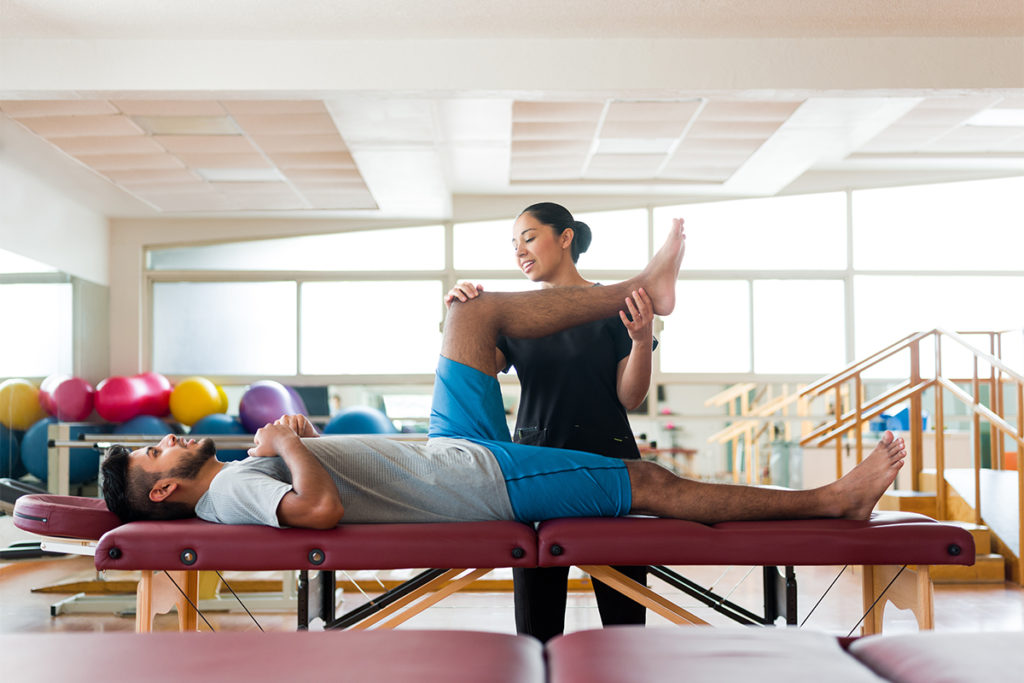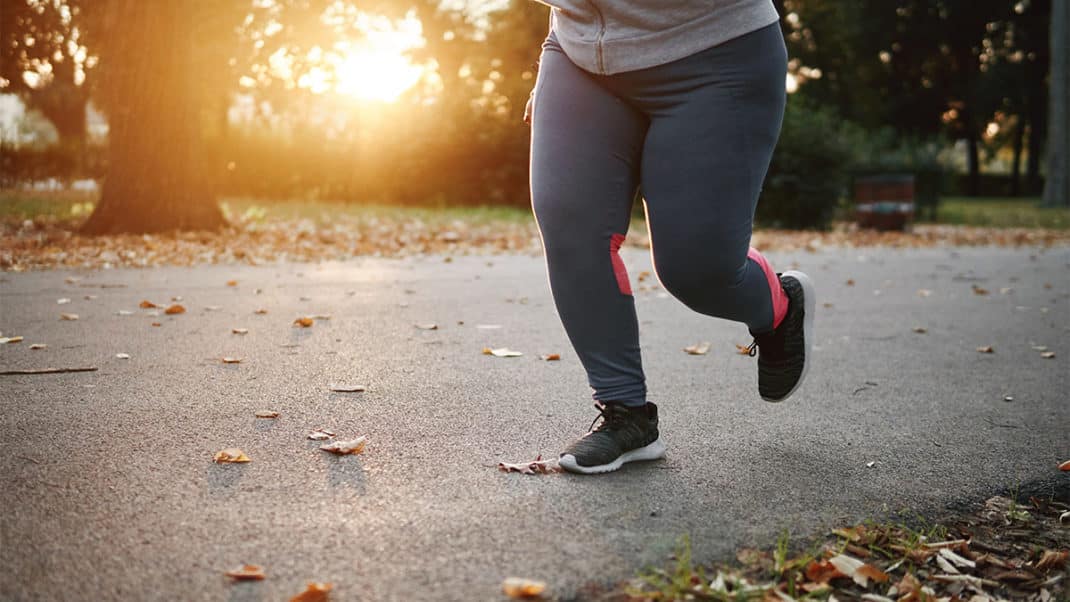Menopause Symptoms: Can Yoga Help?
More women are seeking symptom relief and better quality of life through a mind-body yoga practice.

“Joanne,” aged 51, presents with hot flashes and vaginal atrophy. She feels depressed, anxious, irritable, fatigued and not as confident in herself as she once was. Somehow she feels out of control. Her body is behaving unpredictably: She doesn’t know when her next hot flash is coming or how to control the fat that is shifting up toward her waist.
“Sandra” is only 37 years old and has experienced menopause prematurely. She has not yet had children. She is having severe physical and emotional adjustment problems, including extreme mood swings.
Like Joanne and Sandra, many women are seeking ways to cope with unpleasant menopausal symptoms—and many are turning to yoga and other mind-body practices. Yoga is among the most commonly used complementary therapies to drugs for menopausal symptoms and has minimal adverse effects (Cramer et al. 2012). If you work with women aged 40 and older, you’re likely to have clients with menopausal challenges. Hot flashes, for example, afflict up to 80% of middle-aged women and may continue for up to 14 years (Belluck 2015).
Approximately 6,000 American women enter menopause daily—2 million annually (Brody 2016). The average age is 51 years (Brody 2016). While all women share similar biological stages (see the sidebar “Menopause Definitions”), each woman’s transition is unique.
Menopausal Signs and Symptoms
“Hot flashes seem to get all the attention,” says Brenda Strong, CEO of Strong Yoga® 4Women, in Los Angeles, “but there are so many other symptoms of menopause. And just like pregnancies or other health issues, there’s no one-size-fits-all for menopause. What one woman experiences, another may not.”
Common issues include the following:
- vasomotor symptoms
- vaginal and urinary concerns
- sleep disturbance
- mood fluctuations
- cognitive function changes
- abdominal fat gain
Sources: Santoro, Epperson & Mathews 2015; Sussman et al. 2015; Davis et al. 2012.
Weight gain, distinct from abdominal fat gain, is intertwined with physical aging and can result from inactivity and poor diet (Simkin-Silverman et al. 2003). Researchers continue to tease out the effects of ovarian aging from those of aging overall, both to understand the mechanisms underlying menopausal symptoms and to better target therapies (Freeman 2015). Let’s look at how mind-body practices in general, and yoga in particular, can help with symptom relief.
Hot Flashes, Night Sweats and Heart Palpitations
Vasomotor symptoms are related to nerves and muscles that cause blood vessels to constrict or dilate. In menopausal women, these symptoms include hot flashes, night sweats, heart rate increases and palpitations. The effects—sudden, profuse sweating; intense heat in the face, neck and chest; and core temperature increases—can cause sleep disturbances, fatigue and anxiety. While drops in estrogen level are involved, exact causes are not completely understood. Researchers hypothesize that the symptoms are related to increases in brain levels of norepinephrine, serotonin and other neuro-regulators that affect thermal regulation and to increased activation of the sympathetic nervous system (Freedman 2014; Kaunitz & Manson 2015). The good news is that once a woman’s hormone levels have settled, these symptoms resolve, even without treatment.
On a practical level, the setpoint at which a woman becomes hot gets lower when she experiences vasomotor symptoms and she is therefore less heat-tolerant. Overheating the body can be a subsequent trigger. Maria Luque, PhD, MS, based in Austin, Texas, and a faculty member for the College of Health and Human Services at Trident University, says, “For someone with hot flashes, hot yoga or power yoga would be contraindicated—anything that is trying to increase body heat. More meditative and calming activities would be beneficial.”
To date, the most successful intervention for reducing both the frequency and intensity of hot flashes and night sweats is deep breathing as paced respiration—ideally 6–8 breaths per minute in twice-daily 15-minute sessions (Sood et al. 2013). Sood et al. noted that since women reported difficulty in finding time for two practices per day, it would likely be beneficial to find a once-daily practice that would still maximize beneficial effects. More studies have replicated Sood et al.’s findings, confirming the efficacy of this deep-breathing technique (Freedman 2014).
While yoga per se has not yet been “proven” to relieve vasomotor symptoms, breathing exercises from yoga and other mind-body practices can help. As an example, see the “Sitali Cooling Breath” exercise in the Web Extra, “Yoga Poses for Menopausal Women, at www.ideafit.com/fitness-library/yoga-poses-for-menopausal-women.”
Painful Sex and Incontinence
Strong notes that while everyone talks and jokes about hot flashes and moodiness, few women speak openly about vaginal changes, even though one-third or more of women experience them. Vaginal and urinary issues, referred to as genitourinary syndrome, come from estrogen loss, which causes the vagina to become shorter, narrower and drier, leading to irritation, itching, pain during sex, and even bleeding during exercise (Brody 2016). Estrogen loss also affects the urethra and bladder, resulting in urinary urgency, frequency and incontinence among some women (Kim et al. 2015). Unlike hot flashes, this condition does not resolve once hormone levels stabilize.
In a randomized pilot study, University of California, San Francisco, researchers found that a 6-week yoga therapy program consisting of twice-weekly group classes and once-weekly home practice decreased incontinence frequency but did not affect urge incontinence (involuntary leakage when the urge to urinate is strong). Subjects practiced Iyengar yoga with an emphasis on alignment, pelvic-floor structures and muscle awareness, prop use for support, and mindfulness—rather than cycling rapidly through postures, deep breathing and relaxation (Huang et al. 2014).
Pilates practice, with an emphasis on alignment, core conditioning, breathing and muscle awareness, particularly of pelvic-floor structures, has also been found to help some women with incontinence (Pedriali et al. 2016). For instructors working with women with genitourinary syndrome, an emphasis on these practice points may be helpful in achieving symptom relief.
Poor Quality and Quantity of Sleep
As many as 40%–50% of women aged 45–60 report that they sleep poorly, and the statistics probably underrepresent the problem (Frame & Alexander 2013). Experts agree that a consistent yoga practice can improve sleep, if only through calming and stress reduction. Multiple factors—including vasomotor symptoms, more frequent urination, and hormonal changes—may contribute to sleep disturbances. Poor sleep even affects women who do not have hot flashes (a small percentage of all menopausal women); some studies suggest that, particularly for these women, factors other than hormones are affecting sleep quality (Freeman et al. 2015). Besides yoga, mind-body practices that can help with sleep include qigong, tai chi, mindfulness meditation and guided imagery (Frame & Alexander 2013).
A study of 44 women by Brazilian researchers from the Universidade Federal de São Paulo found that a specific sequence of yoga therapy that included a blend of kundalini yoga, postures, bellows breathing, Tibetan energy techniques and yoga nidra helped some women improve their quality of life and have less insomnia than women in a control group (Afonso et al. 2012). Study limitations included lack of adequate randomization and a high risk of bias (Cramer et al. 2012). While more research is needed, it’s fair to say an emphasis on the relaxation aspects of yogic practice may be helpful for women with sleep issues.
Irritability and Mood Swings
Yoga and other mind-body activities help women overcome mood swings, irritability, anxiety and even feelings of hopelessness and sadness coming from hormonal fluctuations. A small percentage of midlife women are at higher risk for depression (Bromberger et al. 2007). The most recent review of randomized controlled studies on yoga’s effectiveness for menopausal symptom relief found moderate evidence for short-term improvement of psychological symptoms, such as mood changes, anxiety and depression; the review was based on four studies with a total of 545 participants (Cramer et al. 2012).
Brain Fog and Memory Lapses
“Symptoms of poor memory and attention, or ‘brain fog,’ are common during the menopause transition and can benefit from daily meditation and yoga practice,” says Helen Lavretsky, PhD, professor in residence in the department of psychiatry at the University of California, Los Angeles. While women may experience a slight decline in cognitive performance during menopause, prior learning, concentration and memory abilities typically return once women hit postmenopause (Greendale et al. 2010).
Lavretsky, lead investigator in a pilot study conducted at UCLA, found that a 3-month course of yoga and meditation for adults over age 55 lessened the cognitive and emotional problems that often precede forms of dementia, including Alzheimer’s, more effectively than memory enhancement exercises (Eyre et al. 2016). In another study led by Lavretsky, daily meditation reduced stress levels in family dementia caregivers (Lavretsky et al. 2013).
“In our dementia caregiver study,” said Lavretsky, “most of the participants were women in their late 40s and early 50s [who were experiencing the] stress of caregiving for parents and children. A brief 12-minute daily meditation (Kirtan Kriya) improved their sleep, mood, mental focus and coping with stress.” The alleviation of stress is particularly important, as some researchers hypothesize that low estrogen levels may contribute to brain inflammation (Au et al. 2016). In Lavretsky et al.’s study, stress reduction was associated with inflammation reduction.
For more on stress reduction, see the sidebar “Stressed-Out and Down on Life? Yoga Offers Relief.”
The Menopausal Belly
“The number-one reason women in menopause come to see me is concern with weight gain,” says Luque. Weight gain is a symptom of normal aging and can be addressed with improved nutrition and more physical activity. Substantial evidence, however, shows that rapid fat increase and particularly deposition of visceral abdominal fat in menopausal women is related to hormonal changes (Davis et al. 2012).
Visceral abdominal fat can contribute to insulin resistance, type 2 diabetes and also metabolic syndrome, which increases the risk of heart disease. Abdominal fat gain is seen in women of different ethnicities and in both nonobese and obese women. It affects not only physical health but also mental health, being related to anxiety, depression and low life satisfaction during menopause.
Seeking Balance and Equanimity
While science has not shown unequivocally that yoga relieves menopausal symptoms, evidence exists that the practice may help many women as long as it is geared toward the specific symptoms that individuals are experiencing and is taught in a way that emphasizes body and mind awareness, breathing exercises, relaxation and meditation.
Nicole DeAvilla, E-RYT® 500 and yoga therapist in Kentfield, California, says, “The reason we see mixed results for yoga, yoga lifestyle and other interventions is that a woman’s symptoms are a result of imbalances in her system, and depending on what the particular imbalances are, one or another or several interventions may be what work individually.”
Menopause represents a significant transition. A woman is leaving behind her reproductive years and entering the stage when she can apply accumulated wisdom and knowledge. The shift, however, also represents loss of youth and of childbearing capacity. Perhaps the greatest benefit of yoga and other mind-body practices lies in the power of these disciplines to ground and balance a woman’s spirit in acceptance of her strength and maturity, so that she may blossom fully and graciously, while stepping with empowerment into her third act.
In women’s health research, uniform terms to describe menopause have been available only since 2011 (Harlow et al. 2012). “[Defining these terms] was so important, because until then, consistency on classification and nomenclature was missing.” says Maria Luque, PhD, MS. based in Austin, Texas, and a faculty member for the College of Health and Human Services, at Trident University. “This [new] system is applicable to women regardless of age, demographic, BMI or lifestyle factors.”
The menopausal transition and symptomatic time period include the entire process, from the point when a women’s normal reproductive hormone levels begin to shift to the time when levels have stabilized (up to 7 years after her last period).
Perimenopause. The 2–to 8–year time–frame before a women’s period stops; hormones may fluctuate; periods may be irregular.
Menopause. The point when ovaries have stopped producing estrogen and progesterone, and menstruation has not occurred for 1 year; average age is 51 years.
Induced menopause. Menopause caused when the ovaries are removed or ovarian functionality is stopped via medical procedures; this transition can be severe and rapid, with sudden hormone production loss.
Early perimenopause. The time—up to 6 years—after menopause when menopausal symptoms may still occur as hormones continue to stabilize at new low levels.
Source: Harlow et al. 2012.
“We live one-third of our lives after menopause.": says Brenda Strong, CEO of Strong Yoga 4Women, in Los Angeles. “It’s a shame to not deal with symptoms that can impact our relationships, lifestyles and longevity.” And while each menopausal symptom is independently researched, in real life a women’s symptoms are intertwined. For example, night sweats and frequent urination can cause sleep deprivation. Sleep loss can influence mood, mental abilities and weight. A fat midsection can affect body image, confidence and self-esteem. Memory loss or inability to focus can cause anxiety and depression. Increased sympathetic nervous system activity will contribute to feeling stressed. Multiple symptoms combined can significantly increase stress and reduce quality of life, contributing to feelings of helplessness and hopelessness.
“The stress of menopause is where yoga and mindful exercise can particularly help.” says Marie Luque, PdD, MS. based in Austin, Texas and a faculty member for the College of Health and Human Services at Trident University. “Not just with the stress, but also with attitude. Menopause doesn’t control your attitude. Attitude controls your menopause. If you let menopause control how you feel, then you have no control over it.”
Luque’s observation is supported by a University of Washington and University of Pittsburgh pilot study of 11 women with hot flashes, who practiced a daily 15-minute yoga routine for 10 weeks and attended one 75-minute class per week that was designed specifically for menopausal women. All participants perceived improvement in their symptoms and enjoyed stronger feelings of well-being. Interestingly, according to journals the subjects kept, the number of hot flashes did not diminish (Booth-LaForce. Thurston & Taylor 2007).
What is significant is that while symptoms did not change, the women enjoyed better quality of life. This outcome may have resulted from learning to reduce the stress response and adopt a more mindful approach to bodily changes. Menopause is a time when a woman is sometimes painfully reminded that she is not in control of her body—her hormones are fluctuating and she must adapt physically, mentally and, some would maintain, spiritually to her new reality. Yoga, if taught in a mindful manner and with a meditation component, may offer the change in perspective that enables a woman to improve her attitude.
For a sequence of yoga poses that may benefit your menopausal clients, please see our Web Extra, “Yoga Poses for Menopausal Woman,” at www.ideafit.com/fitness-library/yoga-poses-for-menopausal.
Shirley Eichenberger-Archer, JD, MA
Shirley Eichenberger-Archer, JD, MA, is an internationally acknowledged integrative health and mindfulness specialist, best-selling author of 16 fitness and wellness books translated into multiple languages and sold worldwide, award-winning health journalist, contributing editor to Fitness Journal, media spokesperson, and IDEA's 2008 Fitness Instructor of the Year. She's a 25-year industry veteran and former health and fitness educator at the Stanford Prevention Research Center, who has served on multiple industry committees and co-authored trade books and manuals for ACE, ACSM and YMCA of the USA. She has appeared on TV worldwide and was a featured trainer on America's Next Top Model.






